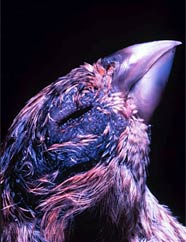West Nile Virus
West Nile Virus (West Nile virus)
Description
West Nile virus (WNV) is a potentially serious illness caused by a flavivirus that cycles between bird hosts, carried by mosquitoes. It is unlikely that the level of West Nile virus in the blood of horses and humans would be high enough to transmit the disease when bitten by another mosquito.
Impacts
-
Most people (80%) infected with WNV will have no symptoms. Twenty percent of those infected may develop a mild form of the disease called West Nile fever. A very small percentage of those infected develop a severe neuroinvasive disease which may include meningitis, encephalitis or meningoencephalitis. Between 1999 and January 2006, there have been 23,882 cases reported in the US to the Center for Disease Control (CDC), 932 of which were fatal.
-
WNV could have a severe impact on native bird populations in Hawaii, many of which are threatened or endangered.
Distribution
-
Not known to be present at this time. The virus may arrive carried by infected mosquitoes in cargo containers, planes or ships. This is thought to be the most likely scenario.
-
Although there are laws restricting the movement of birds into Hawaii, the law does not apply to all species that could carry the virus.
-
Infected wild birds may migrate to Hawaii, although it is unclear if sick birds could travel such a distance (and the majority of migratory birds depart from Alaska, which has no recorded instances of WNV to date.
